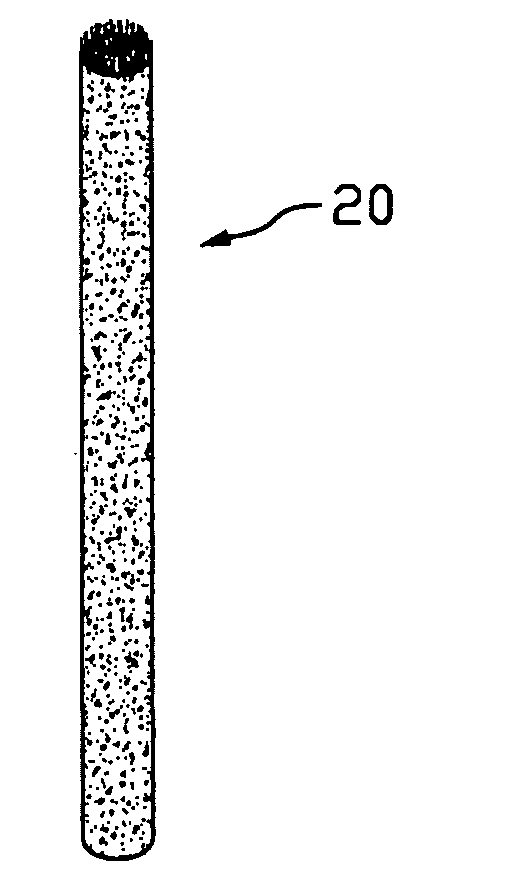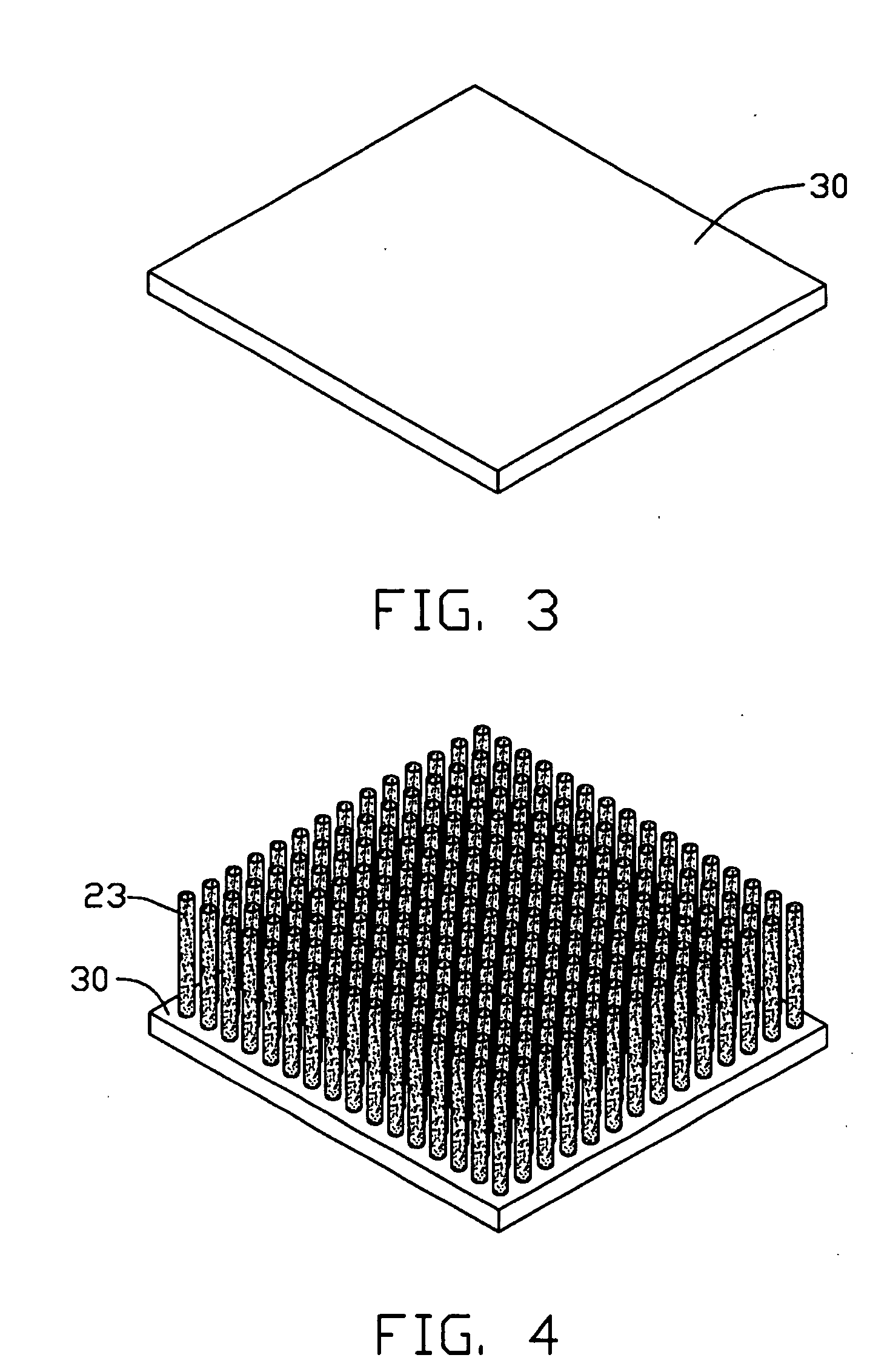Thermal interface material and method for making the same
a technology of thermal interface materials and making methods, applied in the direction of ohmic-resistance heating, basic electric elements, semiconductor devices, etc., can solve the problems of inadequately meeting the heat dissipation requirements of modem electronic components, and the heat conduction coefficient of thermal interface materials is now considered to be too low for many contemporary applications
- Summary
- Abstract
- Description
- Claims
- Application Information
AI Technical Summary
Benefits of technology
Problems solved by technology
Method used
Image
Examples
Embodiment Construction
[0020] Referring to FIG. 6, a thermal interface material 100 includes a macromolecular matrix 10 and a number of thermally conductive fibers 20 incorporated therein directionally and uniformly. The macromolecular matrix 10 includes a first surface 11 and an opposite second surface 12. Preferably, the first surface 11 is substantially parallel to the second surface 12. The thermally conductive fibers 20 are substantially parallel to each other, and extend from the first 11 to the second surface 12. Preferably, the thermally conductive fibers 20 are substantially perpendicular to the first and second surfaces 11, 12.
[0021] Referring to FIG. 1 and FIG. 2, the thermally conductive fibers 20 may be a composite fiber selected from the group comprised of a carbon nanotube / macromolecular material composite fiber, a metal / macromolecular composite fiber, a ceramics / macromolecular composite fiber and a carbon fiber. The carbon nanotube / macromolecular material composite fiber 20 may be made o...
PUM
| Property | Measurement | Unit |
|---|---|---|
| diameter | aaaaa | aaaaa |
| temperature | aaaaa | aaaaa |
| diameter | aaaaa | aaaaa |
Abstract
Description
Claims
Application Information
 Login to View More
Login to View More - R&D
- Intellectual Property
- Life Sciences
- Materials
- Tech Scout
- Unparalleled Data Quality
- Higher Quality Content
- 60% Fewer Hallucinations
Browse by: Latest US Patents, China's latest patents, Technical Efficacy Thesaurus, Application Domain, Technology Topic, Popular Technical Reports.
© 2025 PatSnap. All rights reserved.Legal|Privacy policy|Modern Slavery Act Transparency Statement|Sitemap|About US| Contact US: help@patsnap.com



